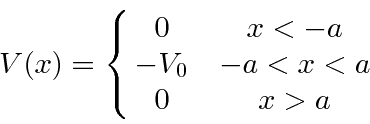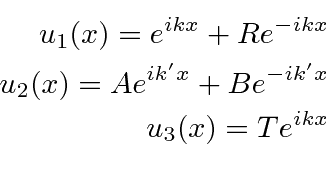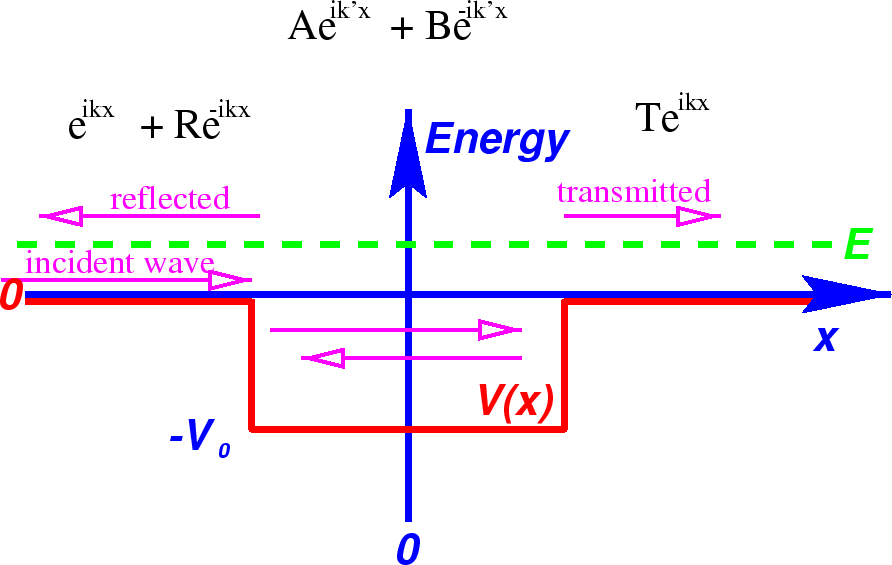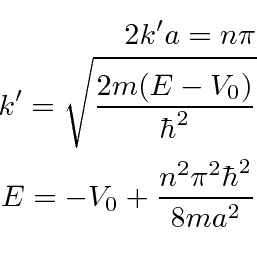Next: Bound States in a Up: Piecewise Constant Potentials in Previous: The Potential Step Contents
 *
*
With positive energy, this is again a scattering type problem,
now with three regions of the potential, all with
 .
.



There are four unknown coefficients. We now match the wave function and its first derivative at the two boundaries yielding 4 equations.
Some hard work yields the reflection and transmission amplitudes

Again, classically, everything would be transmitted
because the energy is larger than the potential.
Quantum mechanically, there is a probability to be transmitted and a probability to be reflected.
The reflection probability will go to zero for certain energies:
![]() if
if

There are analogs of this in 3D. The scattering cross section often goes to zero for certain particular energies. For example, electrons scattering off atoms may have nearly zero cross section at some particular energy. Again this is a wave property.
Jim Branson 2013-04-22